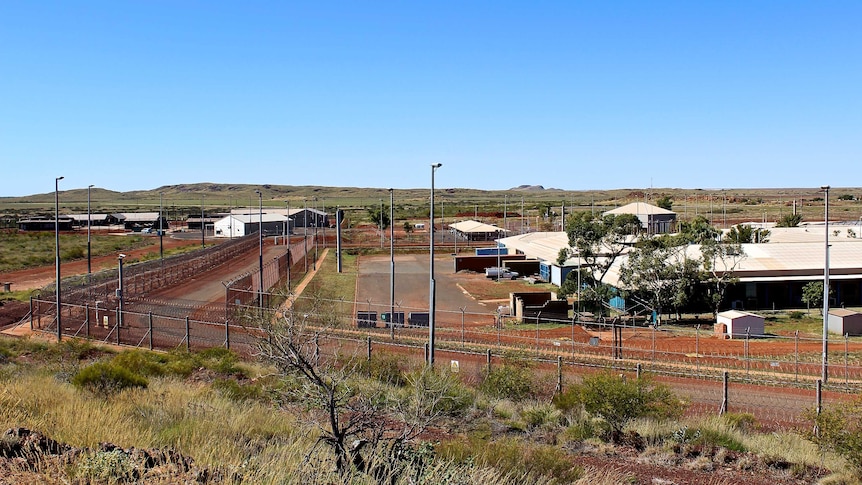A report by the Office of the Inspector of Custodial Services released in 2020 recommended the government implement effective climate control in all residential units at the prison.
This recommendation has not been followed.
Last week Roebourne reached 50.5 degrees Celsius. When contacted, the Department of Justice said installing air-conditioning in all residential cells at the prison was not a current infrastructure priority
The Premier's office and the Corrective Services Minister Bill Johnston were contacted for an interview but declined.
The Premier's office did not answer specific questions such as why air conditioning was not a priority at Roebourne Regional Prison.
The Department of Justice said it employs several effective controls to manage the heat risk across the State.
"At Roebourne, this includes fans in every cell, air-conditioning in the recreation hall, shade structures in the main areas of the prison and a flexible routine to adjust to the Pilbara's heat conditions," they said.
"There are a limited number of air-conditioned cells available for prisoners with medical conditions and air-conditioned transition cells for Section 95 prisoners who undertake full-day outdoor physical activities."
Later
He said inmates were allowed to sleep on the verandah or Roebourne regional prison.
"That happens quite a bit because people feel far more comfortable sleeping outside on the verandah than in their cells," he said.
Mr Logan said back in 2020 that the prison was designed to have maximum airflow.
"The idea of air conditioning the whole of the prison is not only quite expensive, it's also very expensive. It's whether people would appreciate it because there are some people who literally don't like air conditioning."
The majority of prisoners at Roebourne Regional Prison are Aboriginal.
Although Aboriginal and Torres Strait Islander adults make up around 2% of the national population, they constitute 27% of the national prison population.[1] In 2016, around 20 in every 1,000 Aboriginal and Torres Strait Islander people were incarcerated. Over-representation is both a persistent and growing problem—Aboriginal and Torres Strait Islander incarceration rates increased 41% between 2006 and 2016, and the gap between Aboriginal and Torres Strait Islander and non-Indigenous imprisonment rates over that decade widened.
Aboriginal and Torres Strait Islander women constitute 34% of the female prison population. In 2016, the rate of imprisonment of Aboriginal and Torres Strait Islander women (464.8 per 100,000) was not only higher than that of non-Indigenous women (21.9 per 100,000), but was also higher than the rate of imprisonment of non-Indigenous men (291.1 per 100,000).
https://www.alrc.gov.au/publication/pathways-to-justice-inquiry-into-the-incarceration-rate-of-aboriginal-and-torres-strait-islander-peoples-alrc-report-133/executive-summary-15/disproportionate-incarceration-rate/


